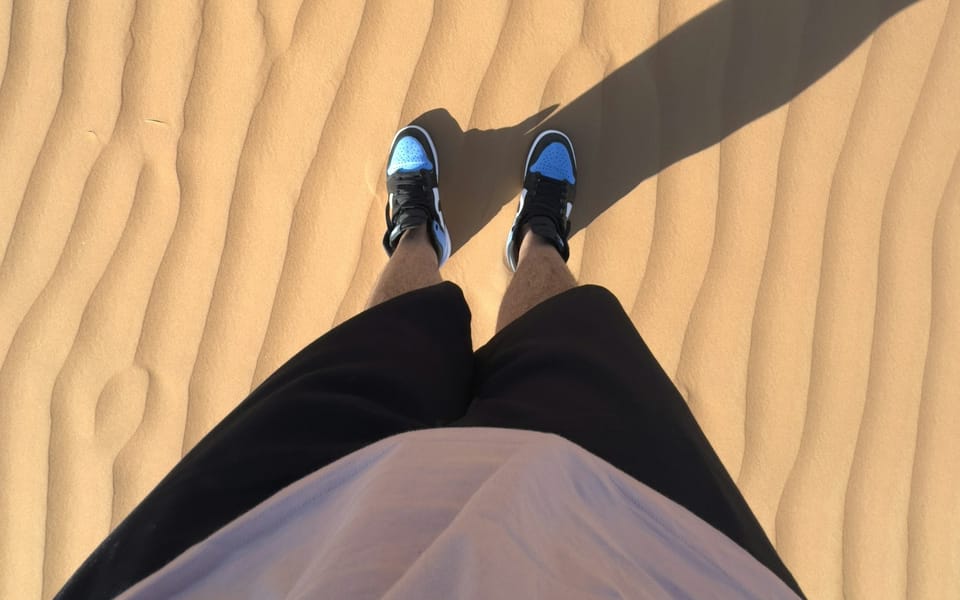Are You Allowed to Daven (Pray) in Shorts?

The question of whether one may daven in shorts is not merely about comfort or climate—it’s a question that touches the heart of what tefillah is: standing before the King of kings. Halachah and hashkafah view clothing during davening as an expression of reverence, awe, and humility. Let's explore the halachos, the sources, and how this applies whether you're davening at home, with a minyan, or at a holy site like the Kotel.
1. What Is the Basic Halachic Requirement for Dress During Tefillah?
The Shulchan Aruch sets a clear tone:
"צריך שיהיו עליו רק מלבושיו המכסים את גופו..." “A person must be clothed [for davening] in garments that cover his body…” — Shulchan Aruch, Orach Chaim 91:1
And he continues:
"לא יעמוד להתפלל... אלא יהא לבוש כדרך שהוא עומד לפני גדולים." “One should not stand to pray... unless he is dressed in the manner one stands before distinguished people.” — ibid. 91:5
The Mishnah Berurah elaborates:
"דהיינו שיהיה לבוש בכל גופו וראשו, ויהיה מלובש כמו שעומד לפני השרים." “That is, one should be fully clothed, with his head covered, dressed as one would be before ministers.” — Mishnah Berurah 91:11
In other words: halacha does not permit davening in undignified clothing. The clothing must be appropriate for standing before royalty.
2. Are Shorts Considered Undignified Clothing?
This depends on both halachic precedent and the cultural definition of kavod. In the Torah-observant world, shorts—which expose the thighs and often the knees—are not considered appropriate attire for dignified prayer.
The Taz (Orach Chaim 91:1) writes:
"אפילו אם הוא רגיל להיות בגילוי הראש והגוף, מכל מקום תפילה – צריך לכסות את עצמו." “Even if one is accustomed to being bareheaded or underdressed, for prayer he must cover himself.”
This establishes a principle: it is not about what you are comfortable with; it’s about what Hashem deserves.
Rav Moshe Feinstein zt”l ruled:
“Shorts are not considered derech kavod (respectful) for davening, even in hot climates.” — Igros Moshe, Orach Chaim 4:70
3. Does This Change If You’re Davening at Home?
Some poskim distinguish between public and private settings. If one is at home, in an extreme case (e.g. someone ill or caught without other clothing), some leniency may be found.
The Biur Halacha (91:5, s.v. "She'lo") suggests that in private settings, standards may be slightly relaxed—but not waived:
"ואם מתפלל ביחידי... ראוי לחוש שגם זה נגד דרך כבוד." “Even when praying alone, it is proper to be concerned for the standard of kavod.”
So although there may not be a formal issur, davening in shorts at home is still inappropriate, unless no other option exists.
4. What About a Minyan or the Kotel?
In a shul or minyan, the halachic expectation is even higher, as it is a makom tefillah b’tzibur.
"בבית הכנסת יש חיוב יתר להופיע בלבוש מהודר ומכובד, כדי לכבד את המקום ואת הציבור." “In a shul, there is a greater obligation to appear in respectful attire, to honor the place and the congregation.” — Rav Shlomo Zalman Auerbach, Halichos Shlomo, Tefillah 2:15
Regarding the Kotel, the standard rises even further. This is a remnant of the Beis HaMikdash, and halacha considers it a place of extraordinary sanctity.
Rav Elyashiv zt”l ruled:
"לבוא לכותל בלבוש שאינו מכובד – הוא ביזיון למקום מקדש." “To come to the Kotel in undignified clothing is a disgrace to a place of the Mikdash.” — Quoted in Vaya’an Yosef, Tefillah, p. 174
This is why the Chief Rabbinate of Israel placed signs near the Kotel reminding visitors to dress modestly and respectfully—which includes not wearing shorts.
5. What If It’s Very Hot Outside?
Chazal tell us that true yiras Shamayim does not change based on temperature.
The Chazon Ish zt”l and others continued to wear long jackets even in the blazing heat, especially during tefillah. It’s not about comfort—it’s about awe.
Rav Avigdor Miller zt”l once said:
“If you were going to meet the President of the United States on a summer day, would you wear flip-flops and shorts? All the more so before Hashem!”
6. A Story from Rav Moshe Tzadka shlit”a
A young boy once came to yeshiva during Bein Hazmanim in shorts and asked if he could daven. Rav Moshe Tzadka gently but firmly told him:
“You can always speak to Hashem. But when you want to enter the King’s palace—put on royal clothing.”
The boy went home, changed, and came back with new respect for what tefillah means.
Conclusion: Elevating Our Tefillah with Respectful Dress
Tefillah is not casual conversation. It’s not a WhatsApp message. It is an encounter with infinite holiness. Shorts may be acceptable in a basketball game, but not when standing before the Shechinah.
The Torah world continues this tradition with care—not out of rigidity, but out of love and awe. Because when you know you’re standing before the King, you dress the part.
Footnotes & Sources:
- Shulchan Aruch, Orach Chaim 91:1, 91:5
- Mishnah Berurah 91:11
- Taz, Orach Chaim 91:1
- Igros Moshe, Orach Chaim 4:70
- Biur Halacha, 91:5 s.v. “She’lo”
- Halichos Shlomo, Tefillah 2:15 (Rav Shlomo Zalman Auerbach)
- Vaya’an Yosef, Tefillah, p. 174 (psak of Rav Elyashiv)
- Rav Avigdor Miller, Praise My Soul, p. 228
- Rav Moshe Tzadka, oral story, published in Derech Emunah Newsletter, Issue #18
